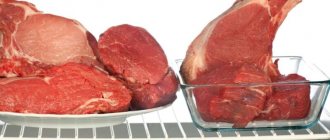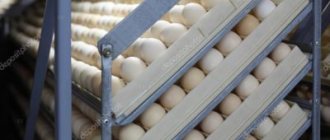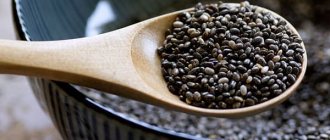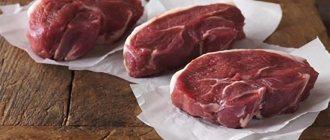Keeping food fresh until recently (namely, before the advent of the refrigerator) was one of the most important tasks of mankind. Products were salted, fermented, dried, stewed. We use all these methods now, especially in the summer, when it’s time to roll cucumbers and cook jam in bowls. In fact, many recipes originated from the need to preserve food beyond the summer season, and this is where the peculiarities of cuisines in different countries come from.
Our great-great-grandparents had other ways to preserve food. Methods that were forgotten with the advent of the refrigerator. We talk about interesting techniques that we used to keep meat and other products fresh.
Article on the topic Film, container or bag? What should you not store food in the refrigerator?
In the ice
In villages (and in cities too, although it was more difficult) glaciers were built. In winter, food was simply stored in a cellar dug to a certain depth and thermally insulated as best as possible (bags with straw were the main thermal insulator of pre-revolutionary times). Or they took them out into the hallway, out into the street, where it was cold. But with the arrival of spring, when warm days arrived, it was no longer possible to preserve meat and milk. Therefore, during the winter and early spring, ice was cut on rivers, lakes and ponds. The pieces needed to be large enough. This ice was brought into the cellar and covered with straw (not hay!). The top of the cellar was also covered with straw to prevent the cold from leaving. On such a glacier, food could be stored until mid-summer. And sometimes longer.
Ways to Preserve Food
Cellars were used to store food - they were dug underground, where the temperature was low and remained cool even in summer.
Most of the food was stored in these underground rooms - milk, eggs, cereals, flour. Special processing especially helped - canning, salting, smoking, making jam. Such products could be prepared in the summer and eaten only in winter or spring. In addition to the well-known methods that housewives use to this day, there were other techniques. And the simplest of them was to prepare exactly the number of dishes that could be eaten in a day. The housewives did not immediately cook for several days in advance; none of the food was stored. If it was necessary to prepare lunch or dinner, they took out as much food as was needed for the family; there was very rarely any surplus left over. Only bread was an exception - it was baked for 2-3 days at once, and if it had time to go stale, they cut it into crackers. If some dishes were left over from the evening, they were used in the morning. For example, porridge, cabbage or potatoes could be added to the dough, shaped into pies - and a fresh breakfast was ready. They added such a perishable product as milk to dough or porridge, drank it themselves, made cottage cheese, butter, sour cream, gave piglets or calves water, and gave some to neighbors who did not have a cow. And if the milk turned sour, you could make pancakes or pies. In order not to store meat, it was cooked very rarely in the summer - for church holidays or for the sick. If they couldn’t eat it themselves, they distributed pieces to their neighbors and remembered who they gave how much to. Then it was the neighbors’ turn to slaughter the pig or heifer, and then they shared with everyone. With this approach, there was no need to store meat in the summer.
And if it was necessary to preserve the meat for several days, it was dipped in salted boiling water, and then the piece was dried. Cooking stew was also popular, when the meat was first simmered in the oven, and then distributed into containers and covered with lard. It was possible to preserve pork or beef by placing it in milk. When it soured, air access to the meat was closed, therefore, it could no longer spoil. The caught fish was first gutted and then covered with nettle or bird cherry, the leaves of which were famous for their bactericidal properties.
In clay
Clay containers were used to store (and also carry) food. They were cooled with liquid: they were simply wrapped in a cloth moistened with cold water. To keep the cold longer, it was necessary to constantly wet the cooling material. Sometimes they used two containers: cold water was poured into the larger one, food was placed in the smaller one, and the containers were placed one inside the other. By the way, proto-refrigerators were made using the same principle in hot countries: in Persia, in India.
Wet and hang. How berries and meat were prepared in Rus' Read more
How were perishable foods stored?
When it comes to quickly perishable ready-made meals, the cellar was not entirely suitable. Microbes stop multiplying in them only at sub-zero temperatures. Therefore, they did not cook much, but enough so that every member of the family was satisfied and there was nothing left. The next day, fresh food was prepared. If there were leftover food - porridge, potatoes - they were added when preparing the same pancakes, pies, pies, etc.
In the old days, in the absence of refrigerators, electricity and sealing lids, housewives chose another optimal and useful type of food preservation - pickling. And now we all enjoy eating pickled cucumbers, tomatoes, and cabbage prepared according to the same recipes. Previously, for this it was enough to put washed vegetables in cold well water with the addition of salt.
Sweet fruits - apricots, quinces, apples and other names were preserved in the form of jam. Sugar was rare, so during cooking, sweet herbs were added and mixed with honey.
Until now, one of the best methods of preservation is drying. If geography allows, you can place the same cut fruits and vegetables on the roof under the hot sun.
In the well
The water in the well is below ground level, so it remains very cold even on hot days. So the well could also be used as a refrigeration chamber, the main thing is to wrap the product properly so that it does not spoil the water. This method did not save our ancestors for long; meat could only be preserved for a few days. But a well can help in the country if the electricity is turned off. By the way, if you fill cucumbers with well water and change it daily, they will last for at least a month and will not wither.
Article on the topic
Reader tips: how to store food without refrigeration
Using an ice cellar
Despite the lack of electricity, the villages used to have their own refrigerators. In addition to the usual cellar, they also made an ice cellar. In the warm season, an underground room was dug, its floor was covered with straw or shavings, dried and smoked with firebrands. Then in winter or closer to spring, while persistent frosts still persisted and the ice was strong, blocks of ice were brought from a lake or river and snow was hauled in. All this was laid out on the floor in the ice cellar. The lid was covered with old blankets and bedspreads so that as little heat as possible penetrated inside. Even in hot weather, the snow and ice in it melted slowly, and inside the cellar the temperature remained at minus 5-8°C. Even if the ice melted, the cellar would still remain dry, as the water would soak into the earthen floor. In such conditions it was possible to store salted, smoked and even fresh meat, lard, fish, poultry, sour cream, cottage cheese, and milk.
In the coal
It turns out that coal has preservative properties. Our ancestors knew this very well. They stored meat in crushed birch coals. First, the meat was rolled in coal, then wrapped in clean canvas and hung in a cool place. This meat was stored for several weeks.
They also placed the meat in boxes with ash and left it in a dry, ventilated area: this also worked. There was also a way to resuscitate meat that had begun to deteriorate: it was necessary to wash it, place it in cold water, and throw in several hot coals.
Drying, salt and wet cloth
Drying and drying food has been around since time immemorial. This method of preserving provisions for a long time greatly helped the Slavs not only during the long winter months, but also during periods of crop failure and hunting failures. They dried berries and mushrooms, vegetables and root vegetables. Meat and fish were thinly sliced, salted and kept in a draft - in this way the food was preserved for several months.
Salt became a real salvation in the struggle for storing food, which is why it was so valued in Rus'. Everyone’s favorite pickled cucumbers, tomatoes, sauerkraut, mushrooms and other pickles - all these are tasty “consequences” of searching for long-term storage of supplies.
Salt was used not only in the familiar methods of sourdough and pickling, it was also generously sprinkled on cloth, in which many products, including bread, were then wrapped - salt also has bactericidal properties.
By the way, fabric was also used everywhere to preserve food: it was noticed that natural cooling occurs when liquid evaporates, so they wrapped bottles and other containers with wet cuts and tried to keep them in ventilated areas.
In honey
One of the best preservatives is honey. It can be stored for years and still retain its beneficial properties; it will also help preserve fruits. If you pour it over food, you will get something like jam that will last for a very long time. The fact is that thick honey prevents oxygen from reaching the food, thus greatly slowing down the decomposition process; in addition, it has antibacterial properties.
Unsweetened consequences. Truths and myths about honey Read more
How our ancestors preserved food
The refrigerator, which is indispensable for us, was created more than 100 years ago. At first, only a rich person could afford an expensive unit. Over time, more and more companies began to produce them. And, despite the fact that a high-quality unit is still expensive, it is an important component of every home. Let's imagine a situation - the electricity is turned off, the refrigerator is broken, or there is no room in it for additional products. But we need to preserve them - what should we do? After all, it is not always possible to quickly run to the market and purchase an additional unit. The best thing to do is to pay attention to the folk wisdom accumulated over centuries and resort to simple advice. There are different types of food preservation besides the refrigerator:
- using a cellar where the optimum temperature is maintained;
- conservation;
- drying.
We all know that temperatures underground are lower than on the surface. For this reason, in the old days, our great-grandmothers, like modern villagers, dug deep cellars in which the temperature was maintained at about 0 degrees. At the same time, the products were not frozen and did not spoil. But only fruits, vegetables, cereals, butter, eggs, and milk could be stored in them.
How to preserve meat in the forest while hunting
Professional hunters more often use salting, drying or smoking, but for this you need to have the appropriate skills and have the necessary components with you. But there are also simpler, but less effective ways. Killed small game is hung on a belt. Interaction with wind increases shelf life. It is recommended to immediately gut any game and stuff it with bird cherry or nettle leaves. They will not block the flow of air and protect the meat from insects.
Carcasses of large animals must be gutted and bled immediately, otherwise the meat will spoil in the next 5–7 hours. The best option is to cut into pieces and hang. Create a frame of branches and cover it with mesh or gauze so that insects cannot penetrate there. Meat in this form can last up to three days, since it is protected from parasites and regularly ventilated.
Drying
The ideal way to preserve meat without any chemicals is to dry it to such an extent that it is impossible for microbes to grow in it. The traditional way to achieve this is to dry thin strips of meat in the sun, but since we live in the 21st century, I would advise you to use an electric dryer - it is both faster and safer. Cut the meat to your liking - along the grain, in the style of traditional dried meat, or crosswise to make a kind of meat chips, but the pieces must be very thin so that the meat is dried not only on the outside, but also on the inside.
If meat is stored for a long time, the fat in it may go rancid, so try to remove skin and fat from the meat before slicing, and then cut it into pieces no more than 5-6 millimeters thick. I advise you to choose lean beef or chicken breast for drying - they have the least fat.
Set your dryer to 75 degrees Celsius, which is ideal for killing harmful bacteria (such as salmonella and E. coli) in meat strips. To further protect yourself, preheat the meat in the oven at 120 degrees Celsius for 10-15 minutes. To dry the meat sufficiently, leave it in the dryer for 16-20 hours, then pack it into tightly sealed containers (but do not stuff them too full). In this form at room temperature it can be stored for up to two months. If you want to preserve the meat for a longer period, put it in the refrigerator, or use vacuum packaging.
Storing food in rural areas before the advent of refrigerators
Cellar
It was easier for villagers or owners of private houses. Somewhere in the courtyard they dug out cellars and installed an underground floor. The prepared dishes were taken out into the cool of the dungeon. There were also barrels of salted poultry meat and lard, pork hams hanging, and tubs of ready-made homemade sausages covered in lard.
Cellar glacier
More inventive and wealthy peasants prepared for summer in winter. Poultry and livestock slaughtered in the fall, which escaped salting, were placed in a glacier. It was lined with wooden planks or an earthen pit filled with ice cut from the river. The roof of the unique freezer was made of thick boards knocked together that did not allow heat to pass through. Sawdust or earth was poured on top of it, adding tightness to the structure.
Homemade cheeses were made from excess milk. The curdled mass was placed in a dense cloth and hung from crossbars to remove the whey. The resulting circles were dipped into brine, a highly concentrated saline solution. Before use, soaked in milk or clean water.
Middle Ages
In ancient times, the city was fed by the village. Almost every day, trading people flocked to the square, carrying a variety of food on carts. Chickens, ducks, and geese were delivered live in the summer and frozen in the winter. Pork was smoked and dried, bird carcasses were covered with salt and dried. Game was salted in barrels to prepare corned beef. Food was stored in so-called cages under the main buildings or in storerooms. Special rooms were left dark and located away from heated buildings and stoves used for cooking.
Interesting: Why are my feet cold? Reasons, photos and videos
Wooden and clay containers were used to store food
Sausages have been prepared at all times. Smoked products were hung from the beams of cellars or underground floors. Wooden and clay containers were used to store food. Boiled and fried, they were put into pots, poured with melted internal fat. It prevented the penetration of air into the delicacy, keeping the sausage edible for up to six months (until the fat went rancid). Methods of arranging glaciers, pickling with vinegar, salting and drying fish came from the same era.
How to preserve meat for a short period of time
If the electricity in the house is turned off, the refrigerator is broken, or a long trip is ahead, then without certain conditions the meat may go to waste. Let's look at ways to solve this problem.
Ice
Using ice, meat can be preserved for up to 3 days, but everything will depend on the conditions. Pour ice cubes into a clean container and place the meat. The frozen liquid should completely envelop it. Then close the container tightly and wrap it with cloth. It will make it difficult for the ice to quickly thaw and increase shelf life. If possible, repeat the procedure every 3-4 hours. This is the only way the product can last as long as possible.
It is recommended to prepare ice in the freezer in advance, as it will be useful for storing any food.
Thermal package
The thermal package is capable of maintaining a low temperature for up to 15 hours, but the thermal bag almost doubles the period. The maximum effect will be achieved if the meat is frozen.
Fat
Coat a whole piece of meat with pork or lamb fat. It forms a film that blocks the penetration of bacteria. Wrap the meat in paper or cloth and place in a cool, dark place. The period for preserving meat using this method reaches 96 hours.
scalding
Cut the meat into small pieces and place in a saucepan. Fill with water, add 5-6 tablespoons of table salt and bring to a boil. Cook for 3-4 minutes and turn off the stove. After it has cooled, place it in a container, close it tightly and place it in a cool, dark place. The maximum storage period is no more than 48 hours.
Horseradish and nettle
In nature, you can use horseradish or nettle leaves. Brush the pieces of meat with salt and wrap with herbs. If you are planning a long trip, then you should not use mayonnaise or a similar sauce as a marinade; it is better to use salt and vinegar.
Vinegar
Rinse a whole piece of meat with clean water and allow to drain. Then soak in 9% vinegar. Wrap with cotton cloth and place in a container with a tight-fitting lid. Store in a cool, dark place.
Repeat the procedure every 7–8 hours, first pouring the collected liquid into containers. It speeds up the process of meat loss.
Milk
Rinse the meat with water first and place it in a container. Pour cold milk over everything, close the lid tightly and place in a cool, dark place. The maximum storage period does not exceed 48 hours.
Honey
Take pure honey or honey mixed with water and treat the meat with it. Then place it in an opaque container and close the lid tightly. Store in a cool place away from direct sunlight.
Sorrel
Wash fresh sorrel leaves to remove dirt and remove damaged leaves. Rinse the meat and let drain. Then wrap it in greenery and secure with thread. Replace the leaves with fresh ones every 6-7 hours. If the conditions are met, the product will be stored for about 48 hours.
Lemon and cabbage
This method is more relevant for beef and rabbit meat. Use a mallet to beat fresh cabbage leaves and wrap them around the meat. Then cut the lemon into slices and add the next layer. The more cabbage and lemon you add, the longer the product will last.
Nettle and bird cherry
Bird cherry or nettle will help you preserve beneficial properties in nature. Treat the meat with saline solution and wrap it with plant leaves. They have an antibacterial effect and can keep the product for up to two days, but do not forget to replace the leaves.
Burning
The procedure is reminiscent of frying shish kebab, but without the use of marinade. Divide the meat into 100–150 g pieces and place on a skewer. Place on the heat and turn constantly until a crust appears. Then remove and let cool. Place it in an opaque container and close tightly. Depending on the air temperature and storage location, meat will not spoil in this way for up to 48 hours.
Where was the meat stored?
Beef, pork, rabbit, chicken or other types are all perishable foods in which dangerous microbes multiply quickly. And there were several ways to store them without refrigeration.
- They distributed it to neighbors. There was a custom - a pig was slaughtered at a certain time and shared with loved ones, relatives or neighbors and remembered who got which piece. Then, when it was the turn of those with whom it was shared, the “debt” was returned. That is, people tried to help each other. It is worth understanding that meat was not used so often, but only on major holidays or cooked only for a sick, weak person.
- Drying - the meat was boiled in brine (very salty water), hung in the hot sun, covered with a thin cloth and dried.
- Stew. The meat was stewed for a long time in the oven, and when finished, it was laid out in containers, poured with boiling lard and brought into the cellar. The fat did not allow air to enter, and under vacuum conditions bacteria had no chance to reproduce.
Vinegar wrap
Vinegar has been used as an excellent preservative for a very long time. For storage, the meat product was wrapped in a cloth soaked in a vinegar solution: add 3 tablespoons of sugar to 500 ml of vinegar. To increase shelf life and add a piquant taste, the meat was sprinkled with pepper before wrapping. The bundles were placed in the cellar, hanging so that they did not touch anything. If you change the fabric daily, the freshness will remain for two weeks. Before cooking, the meat had to be washed thoroughly.
Methods for preserving meat products that people have used for centuries are still relevant today - when going outdoors or when the refrigerator breaks down.










